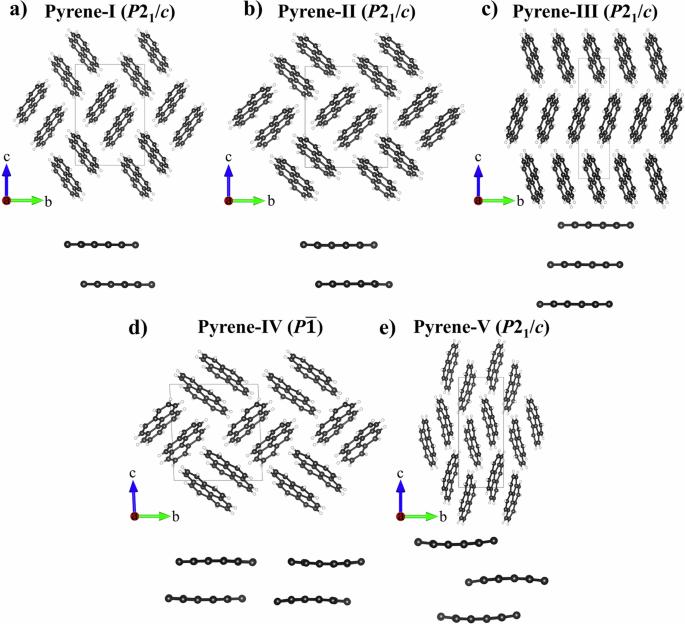芘在金刚石砧室中压缩至 35 GPa 时的多态性
IF 5.9
2区 化学
Q1 CHEMISTRY, MULTIDISCIPLINARY
引用次数: 0
摘要
对芘的结构研究仅限于 2 GPa 以下。在此,我们报告了利用金刚石砧室中的原位单晶同步辐射 X 射线衍射和 ab initio 计算对高达 ~35 GPa 的芘进行的研究。研究揭示了芘-I 到芘-II(0.7 GPa)、芘-IV(2.7 GPa)和芘-V(7.3 GPa)的相变。结构和键合分析表明,逐渐压缩会导致分子堆积不断压缩,最终导致分子弯曲,这是以前从未观察到的。大有机分子表现出意想不到的高构象灵活性,保留了高达 35 GPa 的芘-V。Ab initio 计算表明,与之前报道的在 0.3 和 0.5 GPa 下的芘-III 相比,我们发现的物相在热力学上是稳定的。我们的研究有助于从根本上理解多环芳烃的多态性,并要求对其结构-性质关系进行进一步的理论探索。迄今为止,对多环芳烃芘的结构研究仅限于 2 GPa 以下。在此,作者利用金刚石砧室中的原位单晶同步辐射 X 射线衍射技术研究了高达约 35 GPa 的芘晶体结构,发现了两种以前从未观察到的多晶体,并发现逐渐压缩会导致分子堆积的持续压实,最终导致分子弯曲。本文章由计算机程序翻译,如有差异,请以英文原文为准。

Polymorphism of pyrene on compression to 35 GPa in a diamond anvil cell
Structural studies of pyrene have been limited to below 2 GPa. Here, we report on investigations of pyrene up to ~35 GPa using in situ single-crystal synchrotron X-ray diffraction in diamond anvil cells and ab initio calculations. They reveal the phase transitions from pyrene-I to pyrene-II (0.7 GPa), and to the previously unreported pyrene-IV (2.7 GPa), and pyrene-V (7.3 GPa). The structure and bonding analysis shows that gradual compression results in continuous compaction of molecular packing, eventually leading to curvature of molecules, which has never been observed before. Large organic molecules exhibit unexpectedly high conformational flexibility preserving pyrene-V up to 35 GPa. Ab initio calculations suggest that the phases we found are thermodynamically metastable compared to pyrene-III previously reported at 0.3 and 0.5 GPa. Our study contributes to the fundamental understanding of the polymorphism of polycyclic aromatic hydrocarbons and calls for further theoretical exploration of their structure–property relationships. Structural studies of pyrene, a polycyclic aromatic hydrocarbon, have so far been limited to below 2 GPa. Here, studying the crystal structure of pyrene up to ~35 GPa using in situ single-crystal synchrotron X-ray diffraction in diamond anvil cells, the authors discover two previously unobserved polymorphs, and find that gradual compression results in continuous compaction of molecular packing, eventually leading to a curvature of the molecules.
求助全文
通过发布文献求助,成功后即可免费获取论文全文。
去求助
来源期刊

Communications Chemistry
Chemistry-General Chemistry
CiteScore
7.70
自引率
1.70%
发文量
146
审稿时长
13 weeks
期刊介绍:
Communications Chemistry is an open access journal from Nature Research publishing high-quality research, reviews and commentary in all areas of the chemical sciences. Research papers published by the journal represent significant advances bringing new chemical insight to a specialized area of research. We also aim to provide a community forum for issues of importance to all chemists, regardless of sub-discipline.
 求助内容:
求助内容: 应助结果提醒方式:
应助结果提醒方式:


